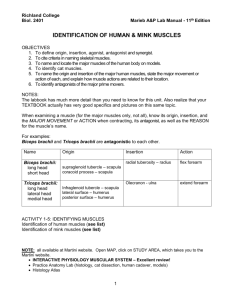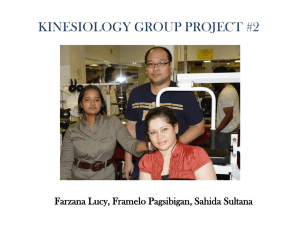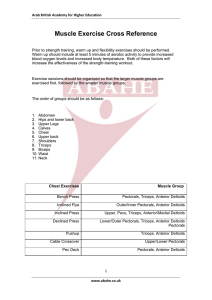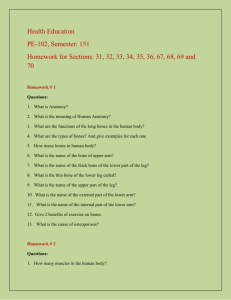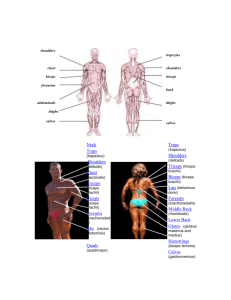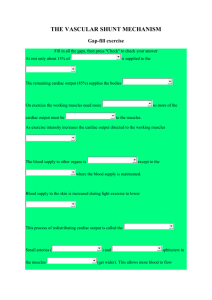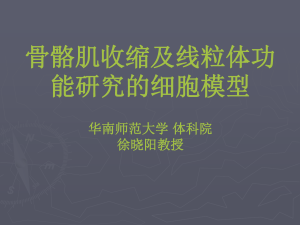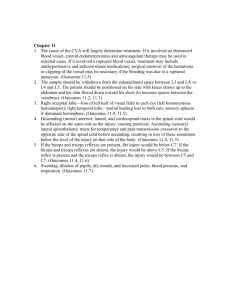Muscle Group Notes
advertisement
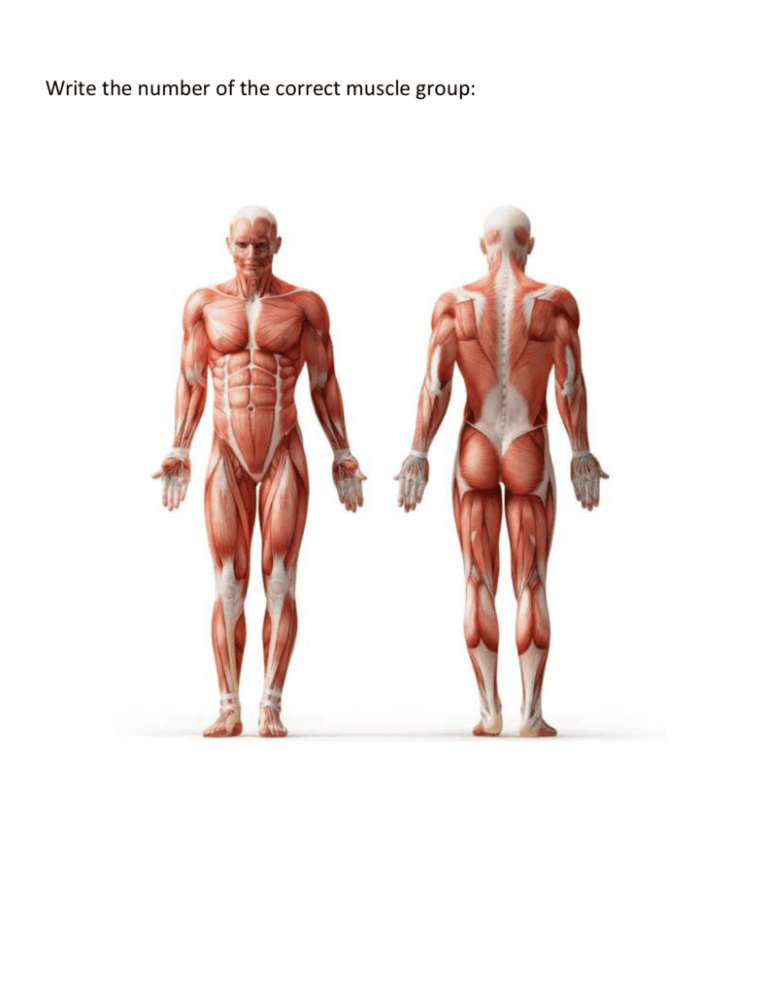
Write the number of the correct muscle group: 11 Major Muscle Groups 1 Name Gluteals 2 Latissimus Dorsi 3 Pectorals 4 Trapezius 5 Deltoids 6 Biceps 7 Triceps 8 Quadriceps 9 Hamstrings 10 Gastrocnemius 11 Abdominals Name________________________ Description The gluteals are also known as your glutes or buttocks. They are a large muscle group comprised of the gluteus maximus, minimus and medius. The gluteus maximus has an origination point of the pelvic crest and ends at the femur - the long bone located in the thigh portion of your leg. The gluteus medius and minimus originate at the pelvis and end at the side of your femur. The gluteus maximus allows for hip extension, the ability to move your leg backwards. The gluteus medius and minimus allow for hip abduction, allowing you to move your legs away from the center of your body. The latissimus dorsi is a large muscle located in your back. These muscles are well-defined and resemble that of wings. They originate in your lower back and insert into the humerus, the bone in the top portion of your arm. They allow your arm to rotate. Additionally, the latissimus dorsi allow you to perform a pulling action The pectorals is your chest muscles. The pectorals originate at the sternum- your breastbone. The insertion point it the humerus. The pectorals major allow for the flexing and adduction of your arms, helping to bring your arms inward towards your chest. The trapezius is the muscle located in the upper portion of your back and around your neck. The trapezius originates in your skull and runs down the center of your spine to the last thoracic vertebrae. Its insertion point is the collar bone, the outer portion of your shoulder bone. The trapezius allows you to elevate, retract and raise your shoulder blade. The deltoids are your shoulder muscles and are comprised of three different muscles. They include the anterior deltoids, which is the front of your shoulder allow your arms to move forward. The medial deltoids are the middle muscles of your shoulders. They are responsible for extending the arms out from the side of your body. The posterior deltoids are the back of the shoulder muscles. They allow your arms to reach backwards. Located in your upper arm, the biceps brachii include a short and long head. The short and long head of your biceps brachii originate at the scapular and have an insertion point of the ulna and radius, the bones in the lower portion of your arm. They are responsible for flexing the arm as well as decreasing the angle of your elbow. The biceps brachii also allow you to bring your forearm to your upper arm. The triceps brachii are found on the back of your upper arm. They are comprised of three heads. The long head begins at the scapula; the lateral head starts at your humerus and the medial head starts at the bottom portion of your humerus and ends at the olecranon process, your elbow. The triceps brachii give you the ability to extend and straighten your arm. The triceps brachii also allow you to increase the angel at your elbow joints. The quadriceps are made up of four different muscles, which are located at the front portion of your thighs. These muscles originate at the top of your femur and end at the shin- or the front portion of your tibia. They include the rectus femorsis, vastus lateralis, vastus intermedius and vastus medialis. These four muscles work together in order to allow for knee extension. They also allow the hip to bend. The hamstrings are comprised of the biceps femoris, semimembranosus and semitendinosus. They are located on the back of your thigh. The hamstring originate just below the gluteus maximus and insert into the shin. They allow for the bending of your knee. The gastrocenmius is frequently referred to as your calf muscle. The calf muscle and located on the back portion of your lower leg. The gastrocenmius originates behind the knee at your femur and inserts into the Achilles tendo, the tendon on the heel of your foot. The gastrocnemius allows for plantar flexion elevation of the heelwhile standing on your toes. A large group of muscles in the front of the abdomen that assists in the regular breathing movement and supports the muscles of the spine while lifting and keeping abdominal organs such as the intestines in place. Abdominal muscles play a key role in exercises such as "sit-ups." They are informally called the "abs". Exercise
